
On this day in Tudor history, 21st August, a bishop whose career spanned the reigns of three kings was forced to resign, and Humphrey Llwyd, the man behind the very first printed map of Wales, died…
[Read More...]
On this day in Tudor history, 21st August, a bishop whose career spanned the reigns of three kings was forced to resign, and Humphrey Llwyd, the man behind the very first printed map of Wales, died…
[Read More...]
On this day in Tudor history, 18th August, John Dudley, Duke of Northumberland and former Lord President of the king’s council, was tried for treason and found guilty, and Virginia Dare, the first child born to English settlers in the New World, was born in the Roanoke colony…
[Read More...]
On this day in Tudor history, 15th August, Catholics Robert Wilcox, Edward Campion, Christopher Buxton and Robert Widmerpool, who’d become the Oaten Hill martyrs, were examined, and Lady Mary Scudamore (née Shelton), one of Elizabeth I’s favourite sleeping companions, was buried…
[Read More...]
On this day in Tudor history, 10th August, the English fleet’s flagship, the Mary Rose, saw battle for the first time in the Battle of Saint-Mathieu; the friars observant were expelled from their houses; Mary I held a requiem mass for Edward VI; and seven men died of drowning at London Bridge…
[Read More...]
On this day in Tudor history, Henry Tudor dropped anchor at Mill Bay in readiness to claim the throne of England; five-year-old Mary, Queen of Scots, set sail for France; and mariner and cartographer Sir Robert Dudley, illegitimate son of Robert Dudley, Earl of Leicester, was born…
[Read More...]
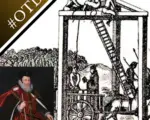
On this day in Tudor history, 4th August, thirteen men were executed at Tyburn, including Brother William Horne of the London Charterhouse and Giles Heron, a former ward of Sir Thomas More; the Battle of Woodbury Common took place; and William Cecil, 1st Baron Burghley and chief advisor to Elizabeth I, died…
[Read More...]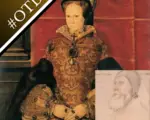
On this day in Tudor history, 3rd August, Lord Russell marched his troops towards the Prayer Book rebels; the new queen, Mary I, processed with her half-sister Elizabeth through the streets of London; and notorious rake John de Vere, 16th Earl of Oxford, died…
[Read More...]
On this day in Tudor history, 26th July, courtier and solder George Talbot, 4th Earl of Shrewsbury, died; and 4,000 men gathered at Tilbury Fort to defend England against the Spanish Armada. It’s also the feast day of St Anne, mother of the Virgin Mary…
[Read More...]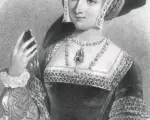

On this day in Tudor history, 23rd July, Marie de Guise and her infant daughter, Mary, Queen of Scots, escaped from Linlithgow Palace; Protestant printer John Day died; and Lord Chamberlain Henry Carey, 1st Baron Hunsdon, son of Mary Boleyn, died…
[Read More...]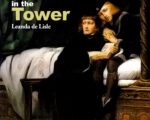
In the late summer of 1483, two princes, aged twelve and nine, vanished from the Tower of London where they had been imprisoned by their uncle, Richard III. Murder was suspected, but without bodies no one could be certain even that they were dead. Their fate remains one of history’s enduring mysteries, but the solution lies hidden in plain sight in stories we have chosen to forget, of English anti-Semitism, the cult of saints, and in two small, broken and incomplete skeletons.
[Read More...]
On this day in Tudor history, 14th July, Henry and Charles Brandon, sons of Charles Brandon, Duke of Suffolk, and Catherine Brandon (née Willoughby), Duchess of Suffolk, died from sweating sickness; reformer and translator Richard Taverner died; and Cardinal Christopher Bainbridge died of alleged poisoning…
[Read More...]
On this day in Tudor history, 13th July, the famous multi-talented John Dee was born; members of the new Queen Jane’s council were meeting with the imperial ambassadors; and poet and courtier Robert Sidney, 1st Earl of Leicester, died at Penshurst…
[Read More...]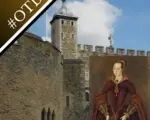
On this day in Tudor history, Lady Jane Grey was received at the Tower of London and proclaimed queen; Francis Throckmorton was executed for high treason after the discovery of the Throckmorton Plot; and Elizabeth I visited the royal mint to check on her new coins…
[Read More...]
On this day in Tudor history, 6th July, Henry III’s former Lord Chancellor, Sir Thomas More, was executed for high treason; King Edward VI died, leaving the throne to Lady Jane Grey; and Margaret Clement, adopted daughter of Sir Thomas More, died in Mechelen…
[Read More...]
On this day in Tudor history, 4th July, reformer and theologian John Frith was burnt at the stake for heresy; Gregory Cromwell, 1st Baron Cromwell, died of sweating sickness; and Elizabethan composer William Byrd died…
[Read More...]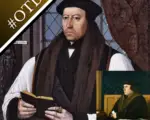
On this day in Tudor history, 2nd July, Thomas Cranmer, Archbishop of Canterbury, was born; Thomas Cromwell was appointed Lord Privy Seal following Thomas Boleyn’s demotion; and a sexton and gravedigger known as Old Scarlett was buried at Peterborough Cathedral…
[Read More...]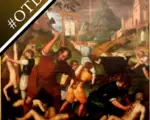
On this day in Tudor history, 19th June, three Carthusian monks were hanged, drawn and quartered; Mary, Queen of Scots, gave birth to a son who would rule Scotland as James VI and England as James I; and the first priest to be executed in Elizabeth I’s reign was hanged, drawn and quartered…
[Read More...]
On this day in Tudor history, The Battle of Blackheath ended the Cornish Rebellion; Sir George Blage was lucky to die a natural death: and Mary, Queen of Scots, was imprisoned at Loch Leven Castle after surrendering to the Protestant nobles…
[Read More...]
On this day in Tudor history, 9th June, William Courtenay, 1st Earl of Devon, died; the Book of Common Prayer was used in English churches for the first time; and diplomat and administrator William Paget, 1st Baron Paget, died…
[Read More...]
On this day in Tudor history, 5th June, Catherine of Aragon’s lady and good friend, Maria de Salinas, married William, 10th Lord Willoughby of Eresby; Elizabeth I’s favourite, Robert Devereux, 2nd Earl of Essex, was charged with insubordination; and physician and naturalist Thomas Moffet died…
[Read More...]
On this day in Tudor history, 4th June, Jane Seymour was proclaimed queen at Greenwich; Robert Dudley married Amy Robsart at Sheen with Edward VI in attendance; and the spire of St Paul’s Cathedral was struck by lightning…
[Read More...]
On this day in Tudor history, 3rd June, Sir Thomas More was interrogated in the Tower of London; bishops in England were ordered to preach in support of the royal supremacy; and John Aylmer, Bishop of London, died…
[Read More...]
On This day in Tudor history, 22nd May, Edward Seymour, brother of Queen Jane Seymour, was sworn in as a privy councillor; Franciscan friar John Forest was burnt at the stake; and four men, including the Earls of Hertford and Surrey, were installed as Knights of the Garter…
[Read More...]
On this day in Tudor history, 17th May, Edward Stafford, Duke of Buckingham, was executed for treason; five men were executed as traitors for their involvement with Queen Anne Boleyn; and Elizabethan spy Anthony Bacon was buried…
[Read More...]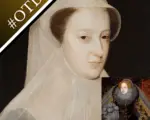
On this day in Tudor history, 16th May, Sir Thomas More resigned as Lord Chancellor; Archbishop Cranmer visited an imprisoned Queen Anne Boleyn; Mary, Queen of Scots, landed on English soil; and William Adams, the inspiration for Shōgun’s John Blackthrone, died…
[Read More...]
On this day in Tudor history, Cardinal Wolsey presided over a book burning; four men were tried for sleeping with and plotting with Queen Anne Boleyn; Baron Hussey was charged with treason; and a friar refused to recant his allegiance to Rome…
[Read More...]
On this day in Tudor history, 8th May, herald and chronicler Charles Wriothesley was born; there was war panic in London; and Elizabeth I gave her approval to the Acts of Uniformity and Supremacy…
[Read More...]